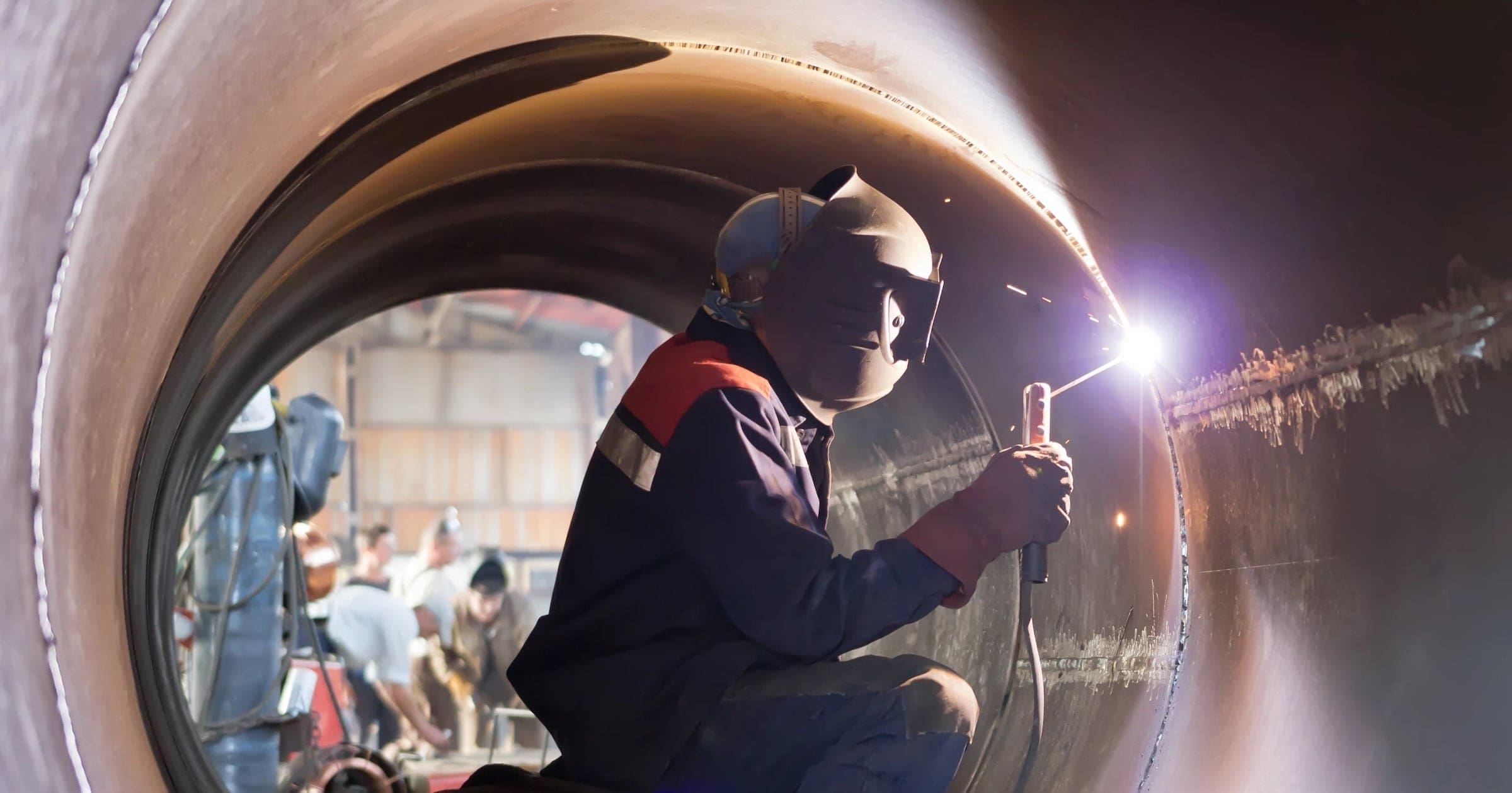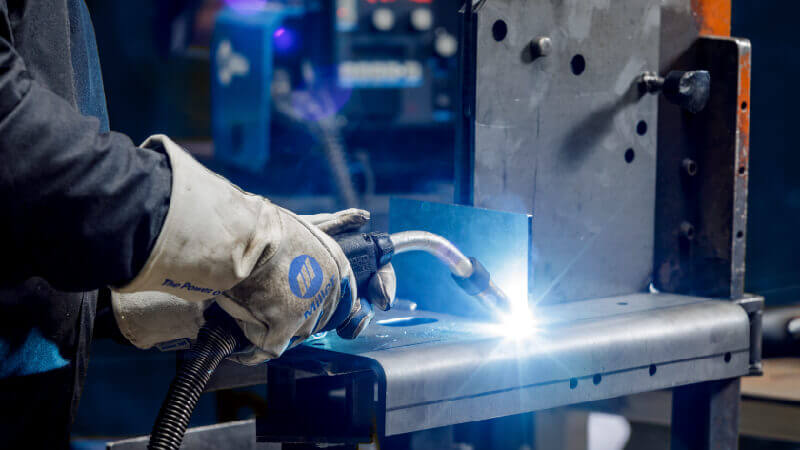Everything about Welding: Key Insights Into Techniques and Best Practices for Success
Welding incorporates a selection of techniques, each fit for particular materials and applications. Understanding these techniques, such as GMAW, SMAW, and TIG, is necessary for achieving ideal outcomes. The best devices and safety and security practices can not be overlooked. As prep work and fixing play critical roles in the welding procedure, mastering these components can substantially enhance the high quality of the last item. What are the essential elements that ensure an effective weld?
Understanding Different Welding Methods
Welding techniques include a range of approaches, each fit to particular applications and materials. Amongst the most typical techniques are Gas Steel Arc Welding (GMAW), Shielded Steel Arc Welding (SMAW), and Tungsten Inert Gas Welding (TIG) GMAW, likewise referred to as MIG welding, is popular for its rate and flexibility, making it ideal for slim materials. SMAW, or stick welding, is preferred for its simpleness and effectiveness in exterior environments, particularly with thicker metals. TIG welding supplies precision and control, making it ideal for detailed work and non-ferrous steels (Welding). Each strategy has its unique benefits and considerations, allowing welders to choose the very best method based upon the job's demands, product type, and desired results. Comprehending these strategies is essential for effective welding
Crucial Welding Devices and Tools
While different welding techniques require details skills, the best tools and devices are just as necessary for accomplishing top quality results. Vital welding equipment consists of welding equipments, which differ depending upon the strategy-- such as MIG, TIG, or stick welding. Protective gear, including safety helmets, gloves, and aprons, warranties security and convenience during the procedure. Furthermore, fixtures and clamps assist secure products in location, making certain precision in welds. Consumables like welding rods, wire, and protecting gas are likewise crucial components that affect the high quality of the weld. In addition, tools such as cutters and mills assist in surface area prep work and post-weld finishing, contributing to a professional result. Purchasing top quality equipment eventually enhances the effectiveness and efficiency of welding tasks.
Safety Practices in Welding
Proper safety and security methods are vital in the welding industry to protect employees from potential risks. Welders need to put on appropriate personal safety tools (PPE), including safety helmets with appropriate shading, handwear covers, and flame-resistant apparel. Adequate air flow is crucial to minimize exposure to harmful fumes and gases created throughout the welding procedure. Additionally, workers need to be trained in the appropriate handling of welding devices to avoid crashes. Fire precaution, such as maintaining combustible materials far from the welding location and having fire extinguishers conveniently offered, are needed. Regular examinations of equipment and work areas can help recognize potential dangers prior to they result in mishaps. By sticking to these security practices, welders can produce a safer working environment and lessen threats related to their trade.
Readying Products for Welding
Preparing products for welding is an important action that greatly affects the quality and honesty of the end product (Montana Mobile Welding and Repair Belgrade). Proper preparation involves cleansing the surfaces to remove contaminants such as oil, dust, and rust, which can compromise the weld. Methods such as grinding, sanding, or utilizing solvents are frequently utilized to achieve a tidy surface area. Additionally, making certain that the materials fit together well is essential; gaps can cause weak welds. It's likewise essential to take into consideration the placement and positioning of the components, as this will influence the convenience of welding and the final outcome. Lastly, choosing the suitable filler material and making certain compatibility with the base steels is important for attaining solid, long lasting welds
Tips for Achieving High-Quality Welds
Achieving high-grade welds requires focus to detail and adherence to best practices throughout the welding process. Proper joint preparation is necessary, guaranteeing surface areas are tidy and totally free from contaminants. Selecting the suitable filler product and welding strategy based on the base metals is important for perfect bonding. Keeping consistent travel rate and angle while welding can promote and protect against flaws uniformity. Additionally, regulating heat input is vital; excessive warm can cause bending and compromised joints. Consistently evaluating the welds during the procedure allows for immediate modifications if needed. Employing suitable post-weld treatments, such as cleansing and stress relief, can enhance the longevity and integrity of the weld, inevitably guaranteeing a successful outcome.
Fixing Common Welding Issues
Welding usually offers difficulties that can influence the high quality and integrity of the end product. Common concerns such as porosity, irregular weld beads, and overheating can emerge, each calling for specific repairing strategies. Recognizing these troubles is important for welders to improve their skills and achieve excellent results.
Porosity Problems Clarified
Although porosity can commonly be overlooked, it stays a critical issue in welding that can jeopardize the integrity of a completed product. Porosity refers to the presence of tiny gas pockets within the weld bead, which can lead and damage the joint to premature failure. This issue normally develops from impurities, wetness, or improper shielding gas coverage throughout the welding process. To reduce porosity, welders should confirm that the base materials are clean and image source completely dry, use ideal securing gases, and keep regular welding criteria. Frequently examining the tools and environment can likewise assist recognize possible issues prior to they manifest in the weld. Addressing porosity properly is vital for attaining solid, long lasting welds that meet quality criteria.

Irregular Weld Beans
Irregular weld beads can greatly impact the quality and strength of an ended up product. Different variables add to this issue, consisting of incorrect travel speed, wrong amperage settings, and irregular electrode angles. When the welder moves too promptly, a grain might show up slim and lack penetration, while relocating too gradually can create excessive build-up. In addition, using the incorrect amperage can lead to either undercutting or extreme spatter, both of which concession weld stability. The welder's method, such as irregular lantern activity, can likewise bring about irregular bead look. To minimize these troubles, welders ought to concentrate on preserving constant, controlled movements and making sure proper devices settings to achieve harmony in their welds. Uniformity is crucial to achieving solid and reputable welds.
Getting Too Hot and Bending Issues
Extreme warmth during the welding process can result in considerable getting too hot and contorting issues, influencing the architectural integrity of the workpiece. These problems usually materialize as distortion, which can compromise positioning and fit-up, making further assembly testing. Aspects contributing to click for source overheating include the selection of welding parameters, such as voltage and travel rate, along with the kind of material being bonded. To minimize these issues, welders need to maintain constant traveling speed and appropriate warm input while keeping track of the work surface temperature. Additionally, pre-heating or post-weld warm therapy can aid minimize tensions triggered by rapid air conditioning - Belgrade Fabrication. Normal examination and adherence to ideal techniques are essential in protecting against overheating and guaranteeing the durability and integrity of welded frameworks
Frequently Asked Inquiries
What Are the Job Opportunities in the Welding Industry?
The welding market supplies varied career possibilities, consisting of positions as welders, examiners, instructors, and engineers. Experts can work in manufacturing, construction, aerospace, and automobile sectors, gaining from strong demand and competitive incomes in numerous duties.
Just How Can I Improve My Welding Rate Without Compromising High Quality?
To boost welding speed without compromising high quality, one need to practice effective techniques, keep devices, enhance settings, and enhance hand-eye coordination. Routine training and looking for responses can likewise home substantially contribute to achieving faster, top quality welds.
What Qualifications Are Readily Available for Welders?
Numerous accreditations exist for welders, including those from the American Welding Culture (AWS), the National Center for Construction Education And Learning and Research (NCCER), and different industry-specific companies. These qualifications boost employability and demonstrate skill efficiency.
Just How Does Welding Influence the Properties of Metals?
Welding affects the residential or commercial properties of steels by modifying their microstructure, which can result in adjustments in ductility, solidity, and toughness. Warm input and air conditioning rates during the procedure considerably impact these product features.
Can I Weld Dissimilar Metals Together?
